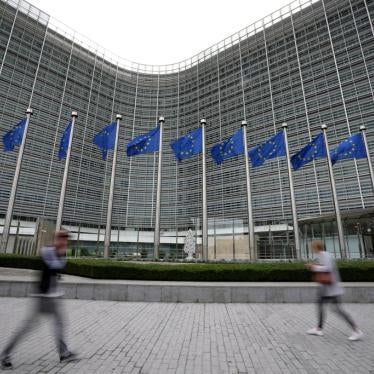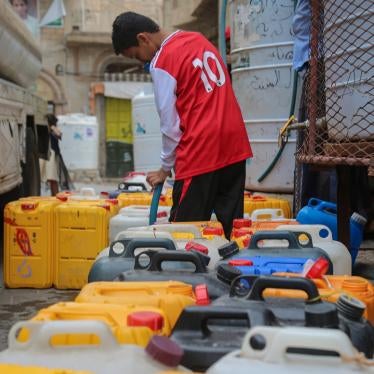It is the holiday season, and people are out buying gifts for loved ones. Jewelry is always a favorite gift – last December, U.S. consumers spent $6.57 billion on jewelry. This year in the U.S., overall holiday retail sales are expected to increase.
Few of us think of human rights problems when buying jewelry for people we love. Or, if we do, we hold onto the thought that there are international mechanisms to ensure, for example, that revenue from mining precious stones and metal is not used to fund violence.
But there is little reason for reassurance. Diamond and gold mining in some parts of the world is still tainted by human rights and labor abuses, as well as environmental harm. In Zimbabwe’s Marange diamond fields, residents have faced forced labor, torture and violence from security force personnel. In the Philippines, children dig deep underground or dive underwater to mine gold, under life-threatening conditions.
And even in the United States, large-scale gold mines have caused dangerous pollution through leakage and accidents.
Many jewelry companies purport to operate with high ethical standards, but still often fail to assess risks for human rights violations in their supply chains.
Earlier this year, my international nonprofit group, Human Rights Watch, scrutinized the sourcing policies of 13 well-known jewelry brands. Ten of the companies responded.
We assessed what they sent us, along with other information that was publicly available. We used criteria for responsible sourcing, including the companies’ efforts to assess and respond to human rights risks. We checked whether they were able to trace the gold and diamonds they used to the source, and their level of public reporting. We also ranked the 13 companies according to these specific responsible sourcing criteria.
Here is what we found: Jewelers often cannot identify where their gold and diamonds originate, and they often rely on the assurances of their suppliers without verifying those claims. In many cases, companies also fail to publish information on their sourcing practices. Several jewelry companies presented certification by the Responsible Jewellery Council, a London-based industry group, as evidence that they were doing well. But, as Human Rights Watch has documented, the council’s standards are weak and its certification process is not transparent.
We also found some good news. For example, Tiffany and Co. traces its gold back to the mine and conducts thorough human rights assessments. And a growing number of small jewelers as well as larger companies, including Signet, Chopard, and Cartier, are making efforts to source their gold from small-scale mines, where steps are taken to ensure that rights are respected.
So, when consumers buy jewelry this holiday, they should consider asking their jeweler these questions:
Where do the gold, diamonds or other minerals in your jewelry come from?
What has your company done to find out whether there are human rights abuses in and around the mines where the metals or gems are from?
Does your company make the names of its suppliers public?
Half the world’s gold and the majority of the world’s diamonds are used for jewelry. Mining these precious minerals provides essential income for millions of miners, but it needs to be done in a way that respects human rights and the environment. This holiday season, remind jewelers of that responsibility.








